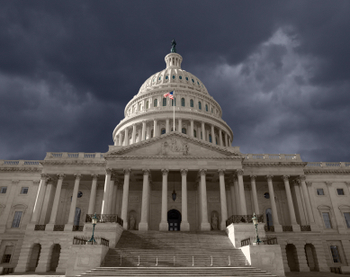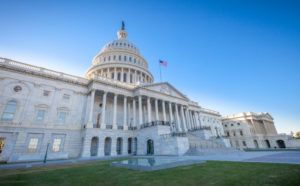
Looking back at the 1995 shutdown reveals insights about regulatory productivity.
With over a week of shutdown behind us, the effects are clearly beginning to be felt in regulatory circles. A few regulatory agencies have been able to continue operations during the shutdown, especially those regulators who oversee the financial sector as they rely on fees rather than general appropriations to fund their operations. In addition, the Occupational Safety and Health Administration announced Thursday that it was levying a fine of $118,000 for the Texas fertilizer plant explosion, and the U.S. Department of Agriculture and the Centers for Disease Control are monitoring a salmonella outbreak in 18 states.
Yet most agencies have been effectively shuttered. The head of the Chemical Safety Board registered his opinion that the shutdown has hobbled the Board’s capacity to respond to any potential accidents such as the one at a Texas fertilizer plant that killed 15 people last April. Likewise, the Food and Drug Administration reports that its goal of 200 domestic food facility inspections for the month has been scrapped entirely and that its inspections of food imports are being severely curtailed. The Environmental Protection Agency (EPA) has reportedly furloughed 90 percent of its employees. When it comes to making new rules, the Federal Register does continue to publish daily – but with a greatly diminished stream of new regulations (just two new regulations were published on Thursday).
Clearly, the short-term effects of the shutdown on regulation are real, at least in certain agencies and with respect to certain tasks (particularly the ones linked with inspections and enforcement). But what can we expect when the government re-opens its doors? Will there be lasting effects on regulatory output from the shutdown? Will agencies be able to finish the year at the same performance levels as usual, or will they have to divert resources from rulemaking to make up ground in inspections and enforcement? This is not the first time that the government has shut down in recent decades. There was a six-day shutdown in November of 1995 and another twenty-six day shutdown from December 1995 to January 1996. Perhaps something can be learned about what the lasting effects of the present shutdown will be by looking back to those earlier shutdowns.
One way to look back is to measure the output of regulatory agencies is by using Federal Register pages. The Federal Register logs all final rules, proposed rules, and notices about various agency meetings and actions. Although only a rough proxy of all agency activity, the number of pages in the Federal Register offers some basic sense of regulatory agencies’ productivity.

Source: https://www.federalregister.gov/uploads/2013/05/OFR-STATISTICS-CHARTS-ALL1-1-1.xls
Start with the basics: in 1994, the year before the last shutdowns, there were 64,914 actual pages published in the Register. In 1995, that number dipped to 62,645 pages—a 3.5% reduction. In 1996, most of that reduction was erased, as the Register published 64,591 pages. Turning to the number of pages of final rules and proposed rules, there were similar declines in 1995: an 11.47% decrease for final rules and a 12.10% decrease for proposed rules. Proposed rule pages continued to decline until 1998.
By themselves, these basic numbers cannot tell the whole story. After all, it could be that a dip of even 12% is insignificant, both historically and statistically speaking. The reduction in 1995 certainly pales in comparison to the reductions in 1981 (-21.19%) and 2009 (-13.64%), for instance, and temporary decreases are not at all uncommon, as shown in the accompanying graph. Furthermore, it could be that the dip observed in 1995 is not attributable to the shutdown but to other unmeasured factors such as the political cycle of rulemaking or the more general effect of divided government. Ultimately, the modest dip in regulatory activity that coincided with the 1995-1996 shutdowns was probably insignificant, as the overall number of Federal Register pages continued its general climb shortly afterward.
However, we might wonder how agencies will perform immediately after any agreement to re-open the government and in particular how much delay they will experience in getting back up to speed. To try to answer this question, we can estimate the average pages per day for the three years surrounding and including 1995 and compare the weeks around the shutdowns to that average. Assuming there are about 250 business days per year on which the Federal Register would be published, that ends up being about 273 pages per day. I collected daily data on the total number of pages published in the Federal Register for the weeks surrounding and including the two shutdowns in 1995 and 1996, and the patterns these data reveal are interesting.
For the week prior to the November 1995 shutdown, the average pages published per day was 242; for the week of the shutdown (including the day just before the shutdown), it was 172 pages (all numbers rounded). For the week after the shutdown, it was 96; and for the second week after the shutdown, it was 279. For the December 1995-January 1996 shutdown, the week before averaged 275 pages per day; for the first week of the shutdown, the average was 328; for the second week of the shutdown, it was 211; and for the third week of the shutdown, it was 136. Once the three-week shutdown ended, the first week after the shutdown, the number of pages per day was 107; for the second week after the shutdown, it was 111; and for the third week after the shutdown, it was 237. Interestingly, these numbers reveal that, at least in these earlier shutdowns, the biggest dips in published productivity occurred after, not during, the shutdowns. In both cases it took at least a week to return to somewhat normal levels of productivity.
Although we might expect a similar pattern this time around, these numbers from the 1990s do reveal a difference from the current shutdown. In the week before the current shutdown, the Register logged 334 pages per day—a little above the average 327 pages using 2010-2012 as a baseline—and that number has dipped below average since October 1. The interesting thing about the dip, however, is that the first week of the shutdown (including the day before the shutdown began) saw an average of 440 pages per day, which was well above the average. The second week saw the production decrease to a trickle: 23 pages per day. In comparative assessment, the current shutdown appears to have been better anticipated and accounted for by agencies. The high first-week numbers suggest that the agencies had much ready to go. The extremely low second week numbers, however, suggest that the agencies might be pinched a bit more than they were in 1995-96, perhaps because of the sequester from earlier in the year.
Overall, it may be difficult to glean much from these data – and they certainly cannot answer the most pressing question of the day: when will the shutdown end. But this glance back at the shutdowns from the 1990s does suggest that a shutdown does not create long-lasting effects on agencies’ regulatory capacities. It might take them a while to warm up after the shutdown, but as long as politicians do eventually come to an agreement and re-open government, federal agencies will fairly soon be back in business protecting health, safety, and the environment.




